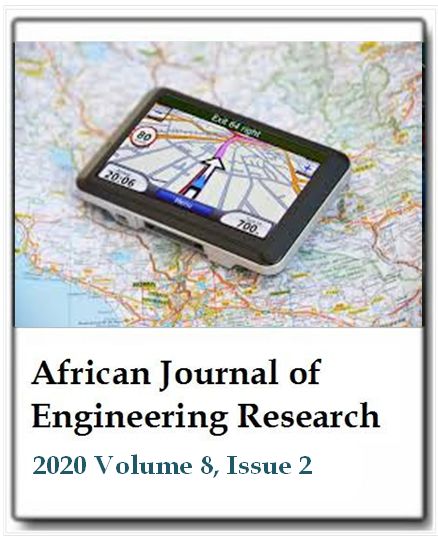Effect of broadcast & precise ephemeris and GPS & GPS+GLONASS use on evaluation accuracy in commercial software
Tuna ErolAfrican Journal of Engineering Research
Published: April 10 2020
Volume 8, Issue 2
Pages 17-28
Abstract
The data obtained from the GPS system is made meaningful by means of software. The software used today is divided into academic, web-based and commercial software. Researches generally focus on academic software and web-based services that have become widespread in recent years. Commercial software is often used by daily users, mostly in classical geodesy. These softwares differ from each other; users, their purpose of use, processing methods, accuracy, users knowledge level etc. Global Positioning System (GPS), which has entered every aspect of human life since its first appearance, has become widespread with the introduction of other systems (GLONASS, BEIDOU, QZSS, IRNSS etc.). Today, the common name of all systems, Global Navigation Satellite Systems (GNSS) continue to exist in our lives. Various studies have attempted to determine the GPS position accuracy, especially from the day it existed in order to determine the accuracy depending on base length and session duration. Both the development of the satellite systems, the increase in the variety and the products that provide services for GNSS systems (IGS, CODE, JPL, etc.) have contributed positively on position accuracy. When the system was first released, changes and innovations continued inevitably in measurement methods, estimation methods and software applied for positioning. In this study, it was tested whether the use of GPS+GLONASS data together and precise ephemeris which is the product of IGS makes a significant contribution to baseline processing accuracy in commercial software Topcon Magnet (Ver 4.0.1). In the first experiment, 16 stations and 8 bases were determined from 1 to 100 km around California, USA. In the second experiment in Turkey near Istanbul in the Marmara region 16 bases in 15 km from the 106 kilometers of the base distance (Turkey-CORS system and of ISKICORS stations) were determined. The experiments were conducted in a 10-day data interval (1, 2, 3, 4, 6, 8, 12 and 24 hour sessions). With commercial software Topcon Magnet (Ver 4.0.1), it was found that the use of broadcast and precise efemeris in baseline processing had no effect on base solution results, and the results of both solutions were very close to each other. It is considered that a user using commercial software does not need to wait 2 weeks for the precise ephemeris to be published to evaluate the data obtained. In the second experiment, if only the data collected from the GPS or GPS + GLONASS system were included in the evaluation process, no significant difference was found when the standard deviations of the obtained results (based on the base distance and observation time) were examined.
Keywords: GPS, GLONASS, broadcast ephemeris, precise ephemeris, commercial software, Topcon magnet.
Full Text PDFThis article is published under the terms of the Creative Commons Attribution License 4.0

